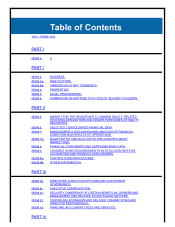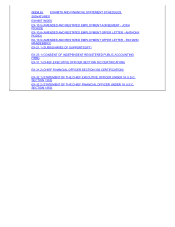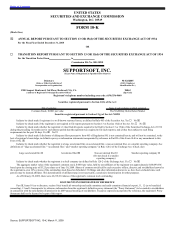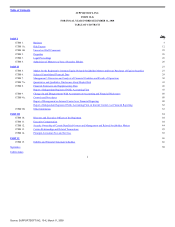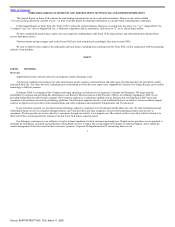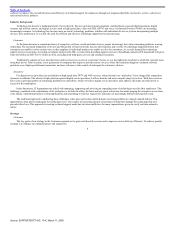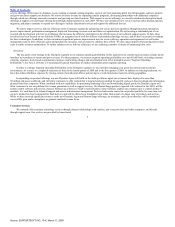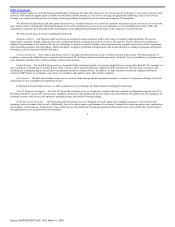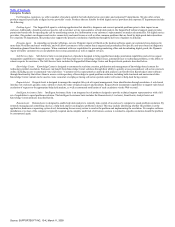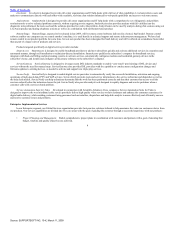Support.com 2008 Annual Report Download - page 7
Download and view the complete annual report
Please find page 7 of the 2008 Support.com annual report below. You can navigate through the pages in the report by either clicking on the pages listed below, or by using the keyword search tool below to find specific information within the annual report.
Table of Contents
software to improve the cost-effectiveness and efficiency of technical support for employees through our integrated portfolio of proactive service, self-service
and assisted service products.
Industry Background
Technology has become a fundamental part of everyday life. Devices such as personal computers, mobile phones, personal digital assistants, digital
cameras and wireless routers, and digital services such as high speed data, video over DSL (IPTV) and voice over Internet Protocol (VoIP), are becoming
increasingly common. As technology has become more prevalent, technology problems, whether with individual devices or systems incorporating multiple
devices, have proliferated. As a result, the need for efficient and effective technology support has become pressing.
Consumer
As the home becomes a complicated array of computers, software, media and other devices, people increasingly have time-consuming problems in using
technology. The increased integration of devices and the growth of home networks increase the frequency and severity of technology support problems that
consumers are unable to solve on their own, or that suppliers of individual products are unable to solve for consumers. As a result, demand for technology
support services is growing. According to industry analysis firm IDC, revenue from providing support services to broadband-connected US households will grow
from $2.0 billion in 2007 to $3.6 billion in 2012, including both third-party services and extended warranties.
Traditionally, support services providers have delivered services on-site at a customer’s house, or at a local physical storefront to which the customer must
bring their device. More recently, a new generation of companies has begun to provide remote services, where the technician diagnoses common software
problems over a high-speed Internet connection, and uses software to take control of and repair the customer’s devices.
Enterprise
For digital service providers, the availability of high speed data, IPTV and VoIP services, often referred to as “triple play,” have changed the competitive
dynamics worldwide. The advent of triple play has spurred digital service providers to offer a broader and more complex range of services. With these services
have come a growing number of technology problems for subscribers, which we believe digital service providers must address efficiently and effectively to
succeed in the marketplace.
Inside businesses, IT departments are tasked with managing, supporting and servicing an expanding array of technologies used by their employees. This
challenge, combined with a redefinition of the workplace to include the office, the home and any point in between, has made keeping the enterprise secure from
virus attacks, maintaining business critical applications and responding to end-user requests for assistance an increasingly difficult and expensive task.
The traditional approach to addressing these challenges relies upon call centers and help desks resolving problems in a largely manual fashion. This
approach has often proven inadequate for technology users, who require an increasing amount of assistance to help them manage the technology that now
pervades their lives. This approach to meeting technical support needs has also been ineffective for many organizations, given its costly and time-intensive
nature.
Strategy
Consumer
The key goals of our strategy in the Consumer segment are to grow and diversify revenue and to improve service delivery efficiency. To achieve growth,
our plan is to enhance our channel partners and expand our
4
Source: SUPPORTSOFT INC, 10-K, March 11, 2009


